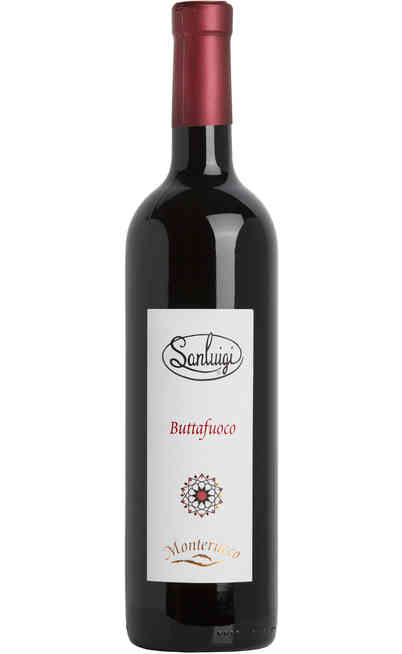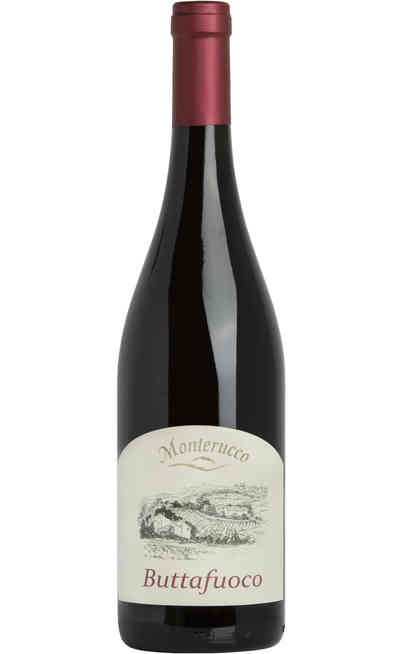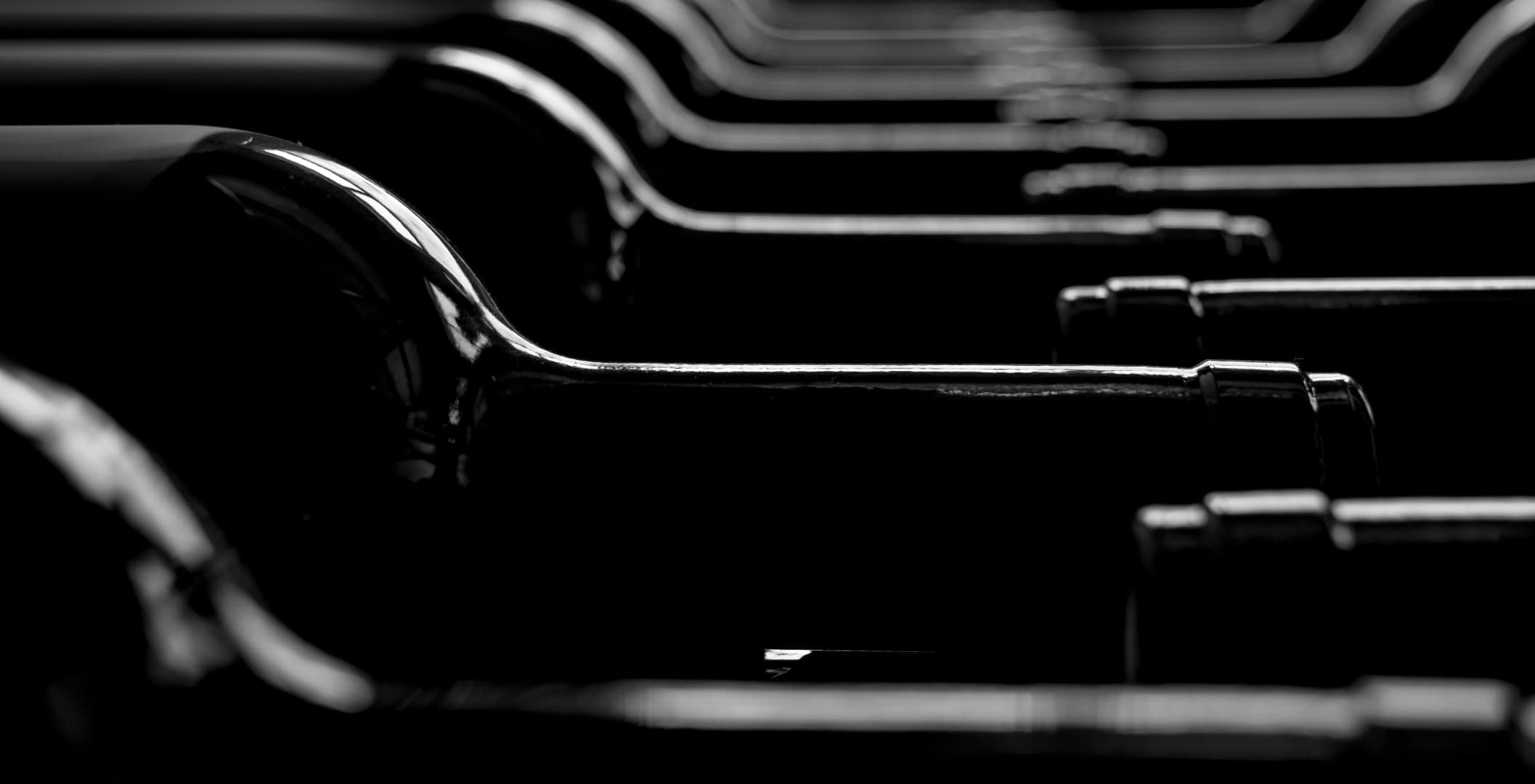
General description of the Buttafuoco DOC wine and territory
The Buttafuoco DOC even if is not well-known it represents for the Lombardia region and for Italy, a very important element of the national wine tradition. It is a prestigious wine realized by following the traditional methods that still today are kept in the local traditions. The Buttafuoco DOC is a dry red wine.
The Buttafuoco of the Oltrepò Pavese is a DOC wine so its production is permitted only in the Pavia province. It is obtained by the blend of the Croatina locally called Bonarda, Barbera, Uva Rara and Ughetta di Canneto cultivated on well exposed slops, sometimes very steep in a narrow hilly land of the oriental side of the Oltrepò Pavese which corresponds on seven towns: Canneto Pavese, Castana, Montescano, Cigognola, Pietra de Giorgi, Broni and Stradella. It Is produced in the following versions: still, long aging, lively and sparkling. According to the Ministerial Decree of 3rd of August of 2010 it obtained the DOC certification with the official denomination of Buttafuoco dell'Oltrepò Pavese or Buttafuoco DOC.
This territory is considered, since Strabone, an important geographer of the Ancient Greece, a land of very quality wines. An important evidence was a piece of vine which goes back to the prehistoric found in the Oltrepò Pavese. During the years the vines are for sure the product the most cultivated in fact in 1970 the Oltrepò Pavese wine, and the “Buttafuoco typology” received its DOC certification.
The DOC certification of the Buttafuoco dell'Oltrepò Pavese or simply, Buttafuoco is one of the 22 denominations present in Lombardia. As already said the grapes used for the production are Barbera, Croatina, Uva Rara and Vespolina. The Barbera vine is widespread in Piedmont, in Lombardia and in more regions in the center of Italy. The Barbera name traditionally is feminine. This vine is younger compared to other vine cultivated in Piedmont such as the Moscati, Grignolino and Nebbiolo. Its cultivation spread during the years and today it is the red grape vine most common in the region and with the Sangiovese, one of the most used in Italy. In the past the Piedmontese Barbera was considered a “rustic” wine but with the time passing, its fame increases thanks to the producers that by following appropriate winemaking processes and by creating both ready to be drunk than aging wines, they created great structured wines with a sort of evolution after the refinement.
As for the Nebbiolo, also the Barbera describes very well its origins ground, which marked the wines where it is used.
Vines used for the production of the Buttafuoco Doc
The Croatina vine has some certified origins of the second half of 1800 but there are some traces also in the Versa Valley and in Rovescala area since the Middle-Age. It was quoted by the Rovasenda (1877), the Molon (1906), the Demarra and the Leardi (1875). It is often confused with the Bonarda, also cultivated in the Novara territory but actually there are no common origins between the two vines. It has a remarkable resistance to the iodine which has permitted the diffusion of the Croatina in Novara and in the Oltrepò, even at the expense of some more prestigious vines but more sensible to the illness such as the Vespolina and the Nebbiolo.
The Uva Rara vine is present since centuries in the North of Piedmont between the Novara and Vercelli provinces and in Lombardia in the Pavia province. Its morphologic features where difficult to be identified because the Uva Rara was often been confused with the Piedmontese Bonarda and the Croatina.
The Di Rovasenda (known and famous Italian Presbyterian at the court of Pope Paolo VI°) in his written of 1877 identified the Bonarda di Gattinara with the Uva Rara from Voghera and the Molon, in 1906 thought the Uva Rara was a synonym of Bonarda. Today it is sure that there is no relationship between these two genotypes so the Uva rara is genetically identified.
The Vespolina vine is located especially in the Oltrepò Pavese which is in the southern part of the Pavia province very close to the first Apennines formation and it is a territory with many hills from the 100 to the 500 meters a.t.s.l. its name comes from the fact the wasps are attracted by the sweetness of its grape during the grape harvest. It is also known with a synonym Ughetta which was one of the most important vines of the Oltrepò Pavese and it is cultivated since the end of the XVIII century.
The production grapes of the Buttafuoco vines
The grapes percentage for the creation of this wines are the Barbera with a 25%-65%. Then there is the Croatina also between the 25%-65% and finally the Uva rara, Ughetta (Vespolina), together or separated, with a maximum of 45%.
The varietal characteristics of the different grapes marked for the Croatina a vine with black grapes, medium-little leaf extended and pentagonal. The bunch is big, conic and extended with a single marked wing, medium compact. The grape is medium, with a spheroidal shape but regular with a turquoise color peel, thick and leathery, profusely covered by bloom. The Barbera vine has medium big leafs, pentagonal with a coat almost hairless. The bunch is medium, cylindrical or pyramidal, correctly compact.
The grape is medium large, ellipsoidal with an intense blue color and easily removable. The peel which is particularly bloomy and thin, has a juicy, normal and sweet pulp, also quite acid. The vine has normally medium vigour. It gives a good production and it is characterized by being constant.
The Uva rara vine leaf is medium large and pentagonal. The upper side is hairless while the downer side is cottony with some vein. The bunch is medium large, quite untied, extended, conic and winged. The grape is medium big and round. The peel is bloomy, quite consistent with and intense turquoise color almost black. The pulp is juicy with a simple taste.
Finally the Ughetta or more commonly “Vespolina” (vitis vinifera circumpadana) has red grapes and has its maturation around the first half of October. Concerning the origins of its name there are many versions in which there is that one which connected the name to the sweetness of the grapes which attired the wasps. It has a pentagonal leaf, the bunch is compact and extended and the grape is dark colored almost black.
Analysis of the Buttafuoco Doc wine
Aesthetically this wine from Lombardia
It has an intense ruby red color with violet reflections that if exposed to the light they bright and stand out.
The scent of this red wine
It has a good intensity, is penetrating and persistent with a light flavor of licorice with some currant aromas and some spicy ones.
The scent is generally winy and fragrant.
The taste of the Buttafuoco Doc
It has a rich body, net, round and strong. It is full and persistent.
Matches suggested for the Buttafuoco DOC
The Oltrepò Pavese Buttafuoco DOC which you can find as single variety 100% in our online wine shop with a fantastic price is a red wine which is perfect to be drunk with games and particularly in humid.
It is particularly indicated for structured dishes of the Po valley tradition and especially from Pavia. It is perfect with raw and cooked ham, in addition to grilled or humid meats.
Service temperature and suggested wine glass for the Lombardo Buttafuoco DOC red wine
It has to be served at 18°C after one hour of settling. The ideal glass is the Ballon but it is also suitable the Gran Ballon. It has to be drunk at maximum two years after the grape harvest.
Come on our online wine shop and you will find the special offers and the Italian wine tradition at very good quality/price ratio.






